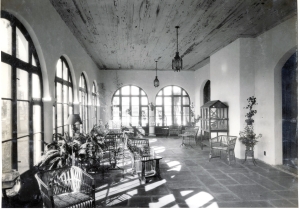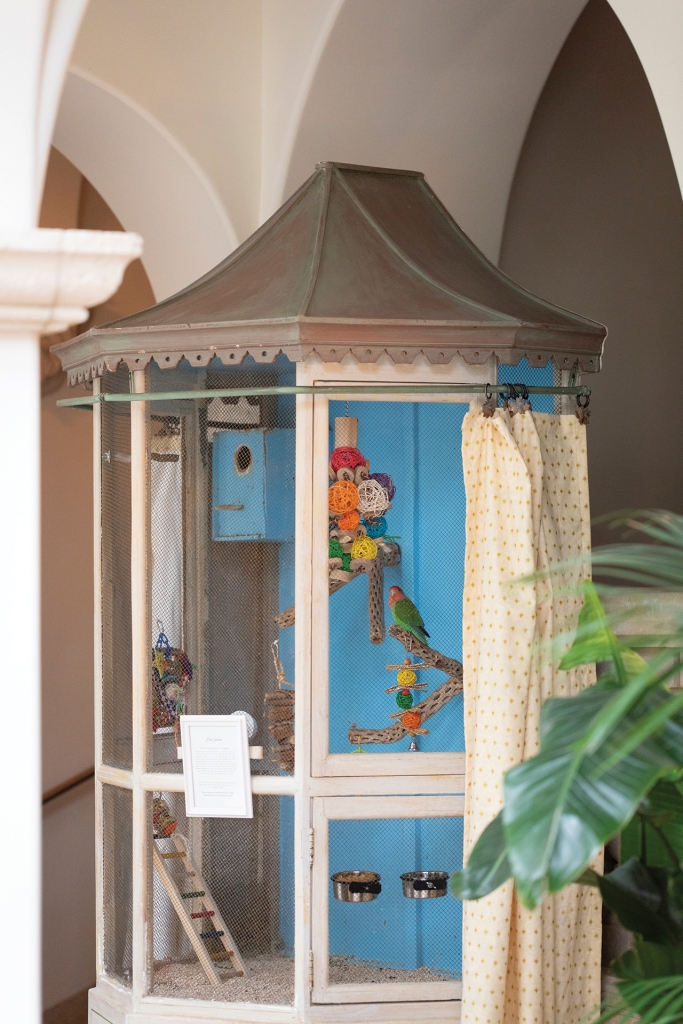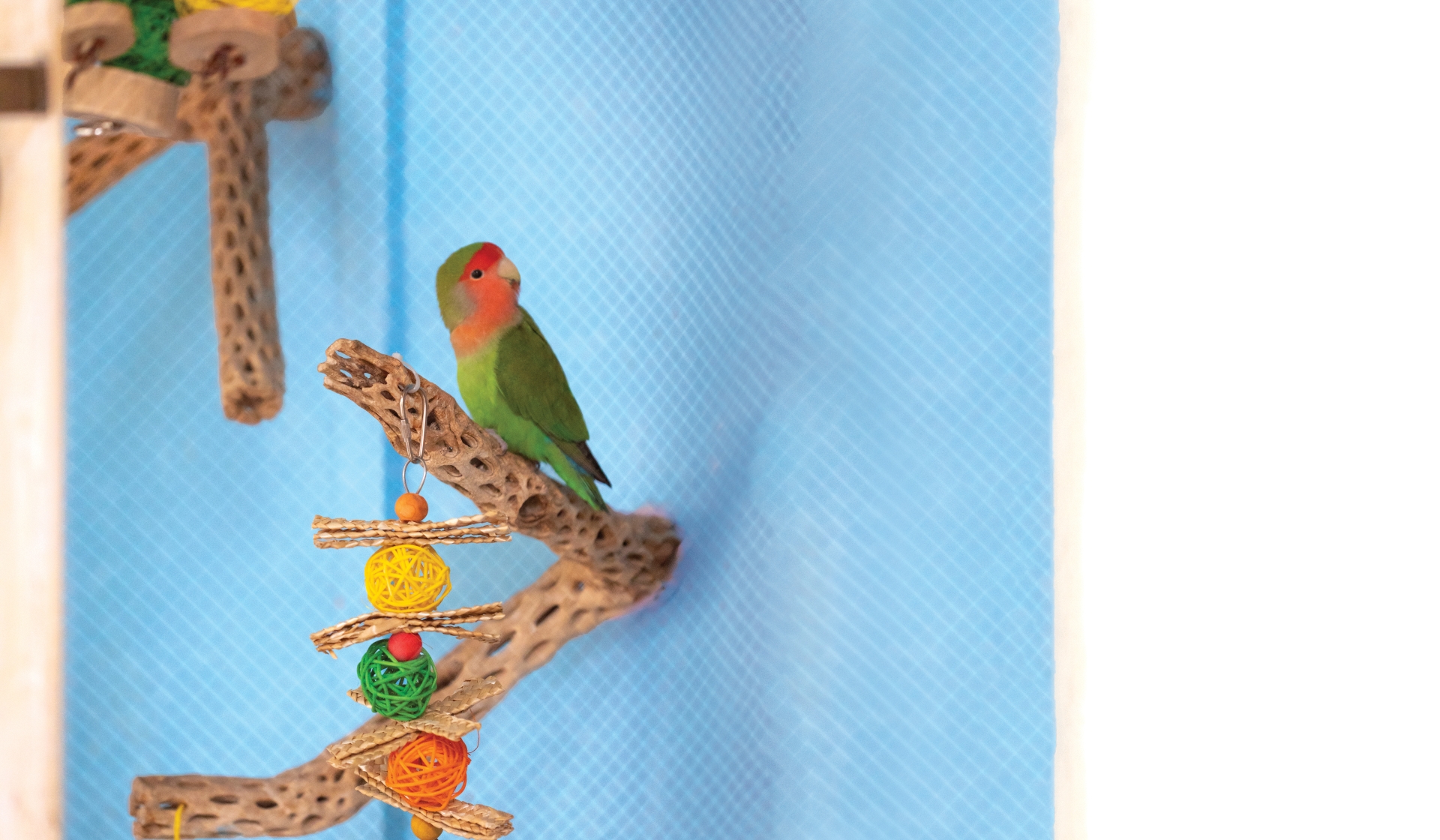Feathered Friends
The Cloister Solarium's lovebirds delight visitors of all ages.
The Cloister Solarium is a favorite spot for Sea Island members and guests. Bathed in sunlight, live plants and the sounds of lovebirds, the Solarium is a place to enjoy nature indoors. Two pairs of lovebirds — one, the peach-faced variety, and the other, yellow- collared — produce happy chirps and whistles, chatter and endless song.
“As far as back as we can tell, Sea Island has always had the pleasure of keeping birds,” recalls Wheeler Bryan, historian for Sea Island. However, many believe the first housed birds at Sea Island were finches. Those first birds lived in the loggia of the original hotel, which opened in 1928. Designed by noted architect Addison Mizner, the original Cloister was built in Spanish Colonial Revival style — something that was reflected in the bird’s cages.
“The design of the cages is very indicative of Mizner’s architectural style,” notes Bryan. “They’re a natural fit for the design of the old and new hotel.”
It’s believed that the birds — and their cages — were moved to the Solarium when the new Cloister was built in 2006.

Sea Island has been home to indoor birds since it opened.
One species of lovebirds at Sea Island, known as yellow-collared lovebirds, was discovered in Tanzania in the late 1800s and found their way years later into the United States after becoming escaped pets. The other pair, known as peach-faced lovebirds, didn’t arrive in the United States until the 1930s. Both pairs of lovebirds have monogamous bonds with each other and, as their name suggests, they are lifelong mates.
When properly cared for, lovebirds can live to be around 15 years old. The Sea Island nature team cares for the resident lovebirds every day. The routine starts at dawn. Lovebirds wake up at sunrise — it’s part of their natural instinct to wake up and search for food. The Outdoor Pursuits team helps with the transition to daylight by uncovering the birds’ cage. Lovebirds need to have their cages covered at night to help them sleep and keep warm.
Of course, the team also provides the birds with grooming and plenty of fresh food and water. Lovebirds not only drink water, but they also bathe in it. And they don’t just eat seed — they also enjoy certain vegetables and fruit. New toys and treats keep the lovebirds feeling their best, so they can continue entertaining and inspiring Sea Island visitors, as they have for many years.
“It’s the lovebirds that make the Solarium come alive,” Bryan comments. “They bring the outside in. People come every year to see the lovebirds. Guests enjoy their morning coffee while watching them. They provide such a calming sense of nature.”
MORE TO LOVE ABOUT LOVEBIRDS
There’s a good reason that lovebirds got their name. The birds, which mate for life, are known for their monogamy and a strong desire to be with each other. 
The birds’ relationship begins with a courtship ritual. The male lovebird attracts the female by feeding her. The male will also make a clicking sound with his beak and often will do a dance to attract the female. It’s apparent they’ve become mates when they begin to preen each other’s feathers.
Lovebirds are native to Africa, and they’re actually a species of parrot. They date back as far as 1.9 million years ago. There are nine different species, which include the peach-faced and yellow-collared lovebirds that live in the Solarium at Sea Island.
Peach-faced lovebirds, also known as rosy-faced lovebirds, originate from Africa’s Angola nation. The yellow-collared lovebirds, also known as masked lovebirds, are native to northeast Tanzania and come in a variety of colors including blues and greens.
But what continues to fascinate scientists is the lovebirds’ lifelong devotion for each other — something that few species, other than humans, exhibit.
In fact, it’s said that when a lovebird loses its mate, it experiences what could be described as depression. It will call out for its mate, often searching in places where the birds were together. Some lovebirds will even stop eating during their time of mourning.




